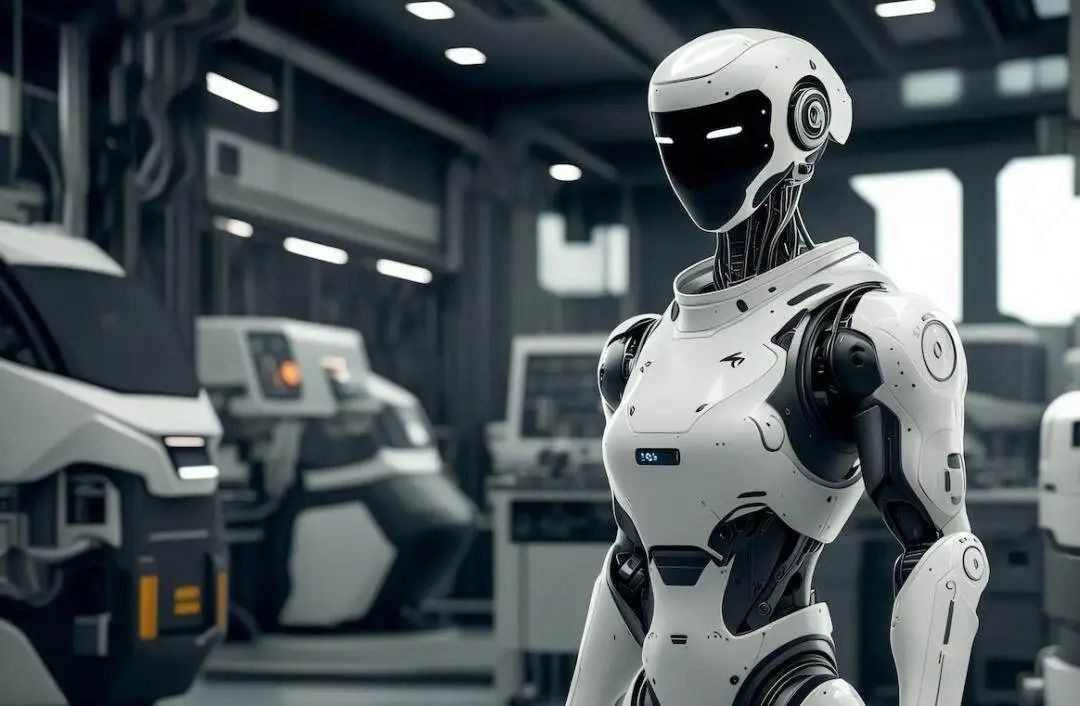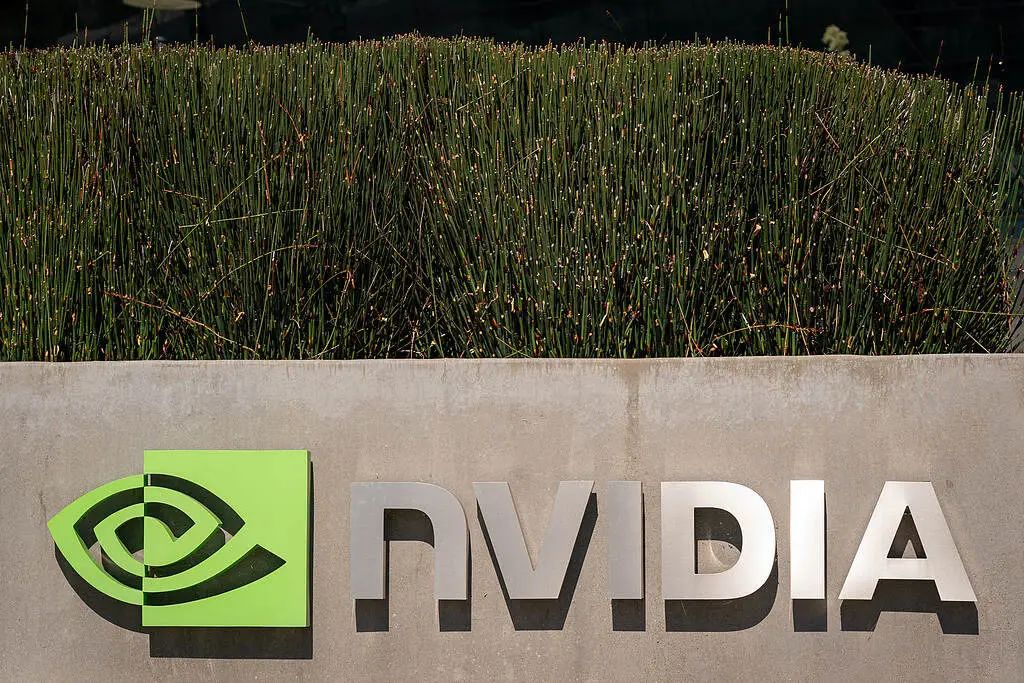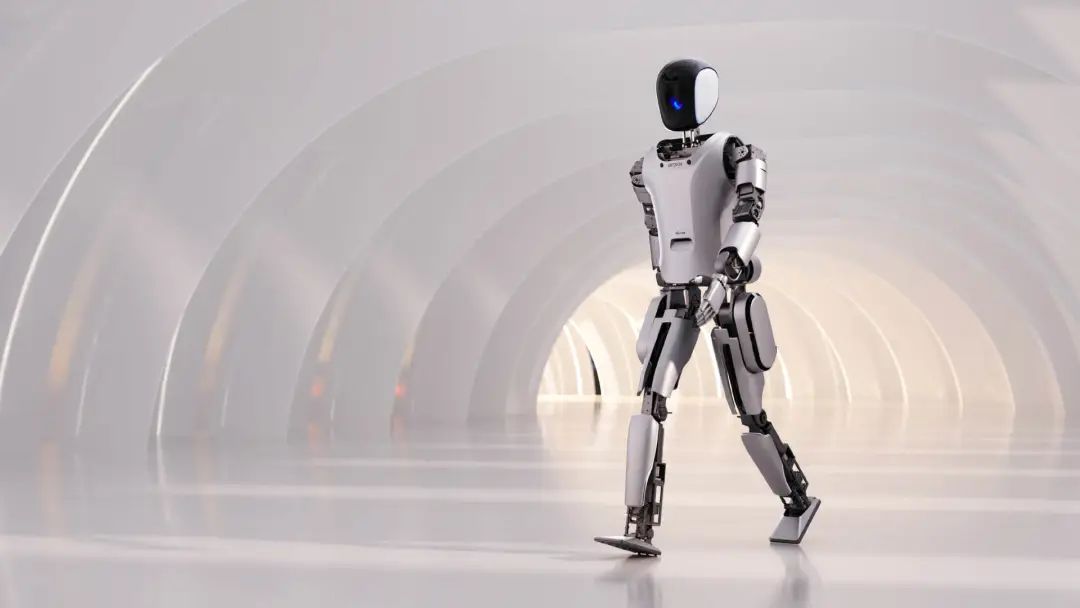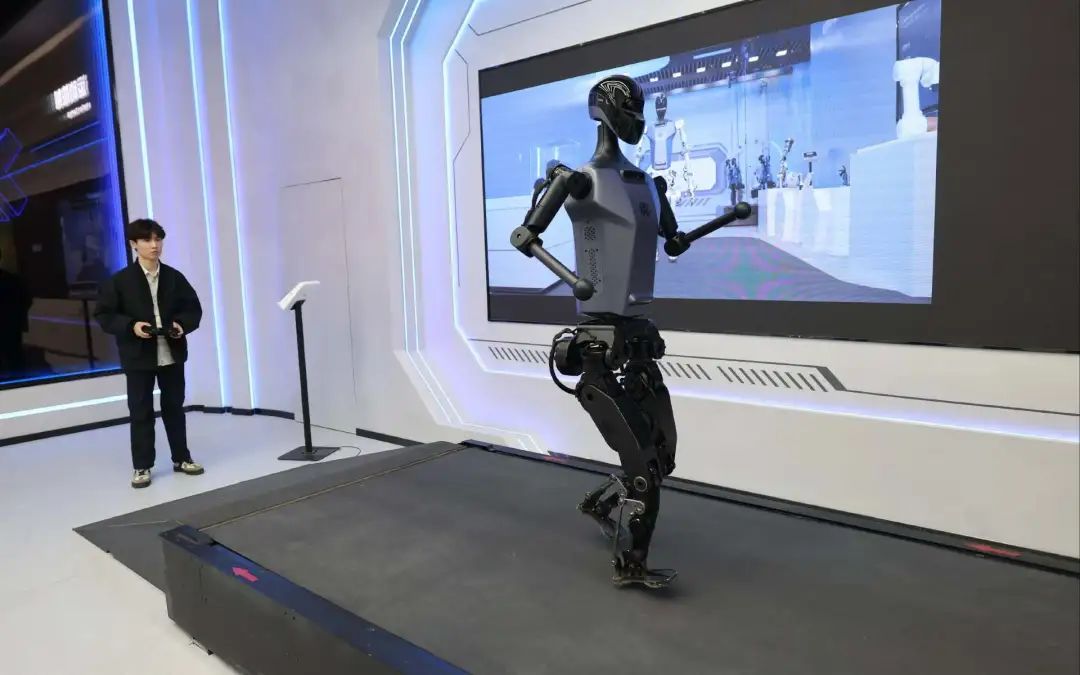NVIDIA releases open-source model, trillion-dollar market faces new variables
![]() 04/28 2025
04/28 2025
![]() 388
388

Author | Lin Feixue
Editor | He Kun
Operations | Chen Jiahui
Produced by | LingTai LT (ID: LingTai_LT)
Featured Image | Publicly available image from the internet
According to Goldman Sachs, an international investment bank, the market size for humanoid robots is expected to reach $154 billion, or approximately RMB 11.0373 trillion, by 2035.
As humanoid robots gradually acquire a certain level of autonomous decision-making capabilities, the mode of human-robot interaction is undergoing tremendous changes. With the rapid increase in data throughput of robots, how to balance rapid technological advancement with engineering ethics has become a core issue that needs to be addressed urgently.
If technology giants build an ecosystem for humanoid robots through open-source platforms, how will the future landscape of the industry evolve?
These questions represent the challenges currently faced by the humanoid robot industry. Technological breakthroughs have made it possible to change traditional development practices and "speed up" the industry as a whole through open-source and data-driven development models.
On March 18, 2025, at the GTC conference, NVIDIA released the GR00T N1 general model for humanoid robots. Leveraging its vast dataset and multi-modal processing capabilities, the company provides global developers with resources such as activity videos and robot demonstration datasets through open-source means.
While this move is seen by the industry as an opportunity to accelerate the popularization of humanoid robot technology, compared to Tesla's strategic choice of establishing a closed-loop ecosystem for Optimus, it has also sparked discussions on topics such as technical standardization.
The open-source model may bring rapid development similar to the Android system, but whether it will lead to ecosystem fragmentation and generalization of order still needs further verification through practice and data support.

End manual coding? Synthetic data surpasses traditional development?
The traditional robot development process typically relies on developers manually writing complex control codes and motion instructions. Whenever a new task or scenario arises, developers need to train the model from scratch, which not only consumes a lot of time and resources but also struggles to cope with increasingly complex application demands. Technological advancements have led to new solutions that begin to break this bottleneck, especially the introduction of synthetic data technology, which significantly improves development efficiency and provides new impetus for robot development, accelerating the iteration process.
The traditional model of humanoid robot development is essentially a lengthy "code marathon." For each new task, developers need to manually write control instructions, which is particularly inefficient when facing complex and varied tasks.
NVIDIA's GR00T N1 model significantly improves development efficiency by leveraging synthetic data and pre-trained models, breaking the time and resource bottlenecks of traditional development.
According to Tianyancha and NVIDIA's public information, the training data for GR00T N1 comes from multiple sources, including "synthetic data" generated through the NVIDIA Isaac GR00T Blueprint, which is training data generated by AI algorithms simulating real-world scenarios.
The data in this material shows that these synthetic data are generated extremely quickly, with over 750,000 synthetic trajectories generated in just 11 hours, equivalent to 6,500 hours of manual demonstration data. This efficiency advantage accelerates the iteration of the development process and enhances the robot's task execution capabilities. By combining synthetic data with real data, developers can use natural language to describe tasks, avoiding the need for cumbersome motion instruction writing.

The industry challenge brought about by this transformation is that algorithm barriers are gradually disappearing, and data assets have become the core resource for industry competition. Technologies like synthetic data in NVIDIA's open-source system may attempt to reconstruct the industrial value chain, shifting developers' focus to new tasks such as data annotation, scenario demand breakdown, and data cleaning.
For example, prompt engineering, a technique for controlling AI output through optimized natural language instructions, may become a "new skill" for developers. Accurately describing "grasping an egg with gentle force" becomes more valuable than writing "PID controller code," easier to master, and with a lower learning threshold.
The "source control capability" over data acquisition and processing becomes the key to competition among giants like NVIDIA and Tesla.
When giants dominate the training and simulation layers, developers need to reassess the priority between efficiency and autonomy.
The risks of "dependency" and the "inertia" of reliance in the open-source ecosystem test whether developers' "humanoid robot products" will end up on a "homogeneous shelf" or in "differentiated scenarios."
Of course, despite the efficiency revolution, the deep value of traditional technologies is being re-examined. However, in fields requiring absolute safety verification, traditional control algorithms still demonstrate unique value.
For example, in high-risk scenarios such as aerospace and medical applications, traditional control algorithms based on physical models remain irreplaceable due to their verifiability. In these specific scenarios, synthetic data may require more practical verification and optimization to ensure its applicability when dealing with complex situations in real environments.
More importantly, within the framework of data privacy and engineering ethics, how can the centralization of platform control be avoided? While advancing technology, how can data privacy be effectively protected, and ethical controversies and concerns be resolved?

Trillion-dollar race: Accelerating "brain-building" while planting ethical landmines?
As the scale of data expands exponentially, the security protection system lags severely. With the enhancement of robots' emotional recognition and simulation capabilities, how can we ensure that data usage does not trigger privacy and ethical issues?
As humanoid robot technology advances, robots collect a large amount of data while performing tasks, and special attention must be paid to data usage and protection. For instance, in elderly care and industrial scenarios, multimodal data such as facial expressions, voiceprint features, and body movements enable robots to monitor users' health data and work rhythms, optimize efficiency, and form health profiles.
The collection and processing of these data endow robots with higher intelligence but also raise concerns about privacy protection and ethics. As robot technology progresses, finding a balance between data usage and privacy protection has become a core challenge for the industry, especially in sensitive applications.
Especially in some specific scenarios, the risk of data leakage may affect the deployment of humanoid robots and the sustainability of the services they provide. Such risks not only impact technology implementation but may also undermine users' trust in the role of robots.
In the pursuit of humanized interaction, this phenomenon prompts the industry to redefine the functional boundaries of humanoid robots.

In response, it is necessary for vendors to enhance transparency in data collection and usage and ensure that all users clearly understand how their data will be used, to avoid the adverse impact of ethical risks on user experience.
While addressing ethical challenges, the choice of technical paths also affects developers' autonomy. In-depth discussions on ethical controversies may prompt vendors to reassess and optimize the underlying logic of their technical paths.
Comprehensive media information from Tianyancha shows that while open-source agreements can mitigate ethical controversies through code transparency, if deeply tied to specific hardware, developers may face a dilemma of choosing between "ethical compliance" and "technical autonomy." The stronger the dependence on the open-source ecosystem, the more likely it is that developers will be constrained in technical decision-making. Maintaining technical autonomy in an open-source environment is an issue that requires attention.
Although technology may be viewed as neutral, the design of certain robot products, especially in terms of emotional interaction, may implicitly contain the value presuppositions of designers, which may further spark discussions on technological neutrality and ethical design.
The launch of GR00T N1 is indeed a breakthrough at the technical level, with its core advantage lying in its vast and diverse data, especially the combination of internet video data, synthetic data, and real robot data, enabling it to quickly adapt to and complete complex tasks.
However, the accumulation and use of these data, as well as the potential entry of humanoid robots into an era of "prefabrication" and "rapid success," inevitably raise questions about how to effectively protect user privacy and prevent data leakage for both NVIDIA and developers using its open-source large model. Industry-wide exploration of solutions is needed.
While open-source platforms help improve transparency, ensuring that these data are not abused remains a tricky issue. Behind technological progress, developers face not only how to achieve technological innovation but also how to address ethical controversies.
In this process, how to ensure the legal use of data and prevent "unauthorized data collection" becomes crucial. All "players" in the entire industrial chain need to strengthen data privacy protection within their respective scopes to ensure that users clearly understand how their data will be used.
As data privacy and ethical concerns become increasingly complex, balancing technological innovation with privacy protection may, to a certain extent, determine the future direction of the humanoid robot industry.

Creating the Android of robots: Can NVIDIA dominate the field?
As data flow breaks down ecosystem boundaries, the divide between open-source and closed-loop strategies among giants has extended to the data layer. Emerging vendors and startups, hampered by the lack of data assets and high acquisition costs, attempt to rely on open-source platforms to "reduce costs and increase efficiency" in key areas.
These strategic choices hide three paths for technical routes. First, the open-source dependency model; second, the closed-loop autonomy route; third, vertical deep diving, with self-research as the primary focus and external resources as a supplement, emphasizing defining products by scenarios and establishing a foothold in differentiated and niche markets.
These three technical routes are tearing apart industry consensus. The open-source model reduces development thresholds through data sharing and exchanges development convenience for data contributions, at the cost of potentially weakening core capabilities; while the closed-loop ecosystem showcases a technical fortress built with substantial investment, which may affect scenario innovation; and the customized path of vertical deep diving, which taps into niche demands in a market dominated by giants, uses scenario expertise to counterbalance scale.
In a competitive landscape where different technical routes coexist, each strategic choice corresponds to a differentiated combination of cost risks.
Under the open-source ecosystem, GR00T N1 attracts a large number of developers and spurs the creation of numerous application modules, making technology, data, and models "accessible" to developers at lower costs and shorter development cycles.
However, this process may, to some extent, deepen NVIDIA's influence and control over the underlying ecosystem. Accompanying this is the excessive dependency of developers on NVIDIA and its open-source ecosystem, as well as the Ripple Effect of "one move affecting the whole body."
From a final outcome perspective, this competition seems to be a balanced game, and it is difficult to simply assess who the winner will be.

NVIDIA is building a trinity of a "three-tier ecosystem architecture": first, the "hardware foundation layer" primarily consisting of Orin/Xavier series chips; second, the "algorithm middleware" centered around the GR00T N1 model and Isaac Sim simulation platform; and third, the "developer application layer" supported by open-source toolchains for rapid deployment.
While this architecture lowers the threshold for development, it may also create a binding effect. Whether Tesla's closed-loop route will encounter cost bottlenecks as the product development cycle progresses, or affect the stability of its ecosystem, remains to be seen.
NVIDIA's ambition may be to become the "Android of humanoid robots" or even general-purpose robots.
As stated publicly by its founder and CEO, Jen-Hsun Huang, "The era of general-purpose robots has arrived. With NVIDIA Isaac GR00T N1 and the new data generation and robot learning framework, global robot developers will usher in a new chapter in the AI era."
As GR00T N1 is poised to become the "brain" of a considerable number of humanoid robots worldwide through open source, will the technical standards of the open-source system guide the design of human-robot interaction? Can "players" in closed-loop ecosystems influence industry development trends with their differentiated technological and data advantages within their own ecosystems?
What is certain is that no single company can dominate the trillion-dollar market, and no single model can fit all scenarios. In the ongoing competition between open-source and closed-loop, differentiation may be the key rule for a company's survival and development.

Final Thoughts
The open-source release of GR00T N1 signals an impending reshuffle in the trillion-dollar race, and this transformation may imply a reconstruction of production relations in the intelligent era.
Synthetic data drives the transformation of development models, giving developers broader access to computing power. The interactive capabilities and even "interactive relationships" brought about by technological development may influence the social acceptance of human-robot collaboration. As robots' autonomous decision-making capabilities improve, the definition of "intelligence" and its role in society may need to be further clarified.
NVIDIA's 'Android for robots' may drive profound changes in the industry, but its long-term impact requires further assessment through practical applications and industry feedback.








